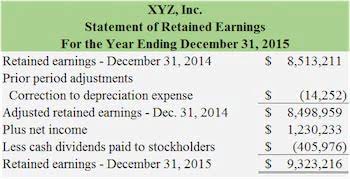
By segregating financial resources into separate accounts, or “funds,” this system enables organizations to closely monitor and report on the performance of each fund. As a result, fund accounting plays a crucial role in maintaining the trust of donors, stakeholders, and regulatory bodies by providing a clear and accurate picture of an organization’s financial health. Fund church chart of accounts accounting is useful for organizations that need to track reserves in multiple buckets without having several cash accounts to keep it all straight. Commonly, churches use a missions or a capital fund to set aside dollars out of the annual budget for various projects. Many of these projects span more than one year, with funds raised in one year being spent in another.
Specialized Services for Church Accounting
- Once you’ve set up your COA, it’s essential that you maintain the same format as you keep it updated.
- A fund is a designated accounting entity to fulfill a particular purpose and has it’s own income and expenses.
- Although your church is considered a nonprofit organization, that doesn’t mean your budget has to break even every year.
- Please note that this is a very basic chart of accounts and the actual might include many more accounts depending on the complexity and size of the church.
- These categories are based on the Unified Chart of Accounts (UCOA), a nonprofit-specific, standardized sample chart of accounts.
- Since churches are tax-exempt, they have to keep detailed records while bookkeeping.
- Another way to shape an elegant chart of accounts is to use account groupings or roll-up accounts to organize your line items.
But remember, a Chart of Accounts will vary based on the specific needs of each church. A well-organized Chart of Accounts allows a church to accurately track its financial activity, from tithes and offerings to payroll and other costs. Transparency in financial matters can help build and maintain trust with donors and members. When people see that the church is using funds wisely and responsibly, they may be more inclined to give.
Sample Church Chart of Accounts Template

The Aplos Team is here to help you accomplish your goals with educational materials that can provide best practices, tips on how to use the software, and examples to inspire you. Provide clear and descriptive names for each account/category/fund to avoid confusion. This can be included in the description fields, such as purpose (Donation for Building Fund). Start by setting up your Accounts and Categories in the software (Assets, Liabilities, Income, and Expenses).
Small Church Budget Template

The platform is flexible enough to process most types of transactions, including cash receipts, online contributions, and vendor payments. It also allows you to create journal entries, generate invoices and statements, and perform bank reconciliations. The statement of activities is a vital financial report for a non-profit organization that offers a comprehensive view of its financial performance. It differs from the income statement used by for-profit businesses, with a focus on financial accountability, transparency, and alignment with the organization’s mission and objectives.
And remember there’s nothing wrong with adjusting your plan when things go wrong, or even when they go right. Some people make donations for flowers expense on special occasions. https://www.bookstime.com/ This may be recorded in the flowers expense account to reduce the overall expense. Mark Pittenger works in the Customer Success department and enjoys connecting with people.

It brings everything together into a single, master bird’s-eye view of an organization’s financial inner workings. Here is a sample chart of accounts for your church to help you take the first step to ensure financial health and vitality for your church today. The same principles can be applied to ministry supplies and travel.
Start Your Free Trial
By considering the listed factors, organizations can choose software that meets their specific needs and enables efficient and accurate accounting practices. Because there are church accounting software platforms out there for large and small organizations, and everything in between, it’s important you find one best suited to your needs. For example, a small or mid-sized church might not need complicated financial tracking.

Financial Reporting Requirements for Churches
They are debited when they decrease, such as when a loan is repaid or an account payable is settled. One reason you need to keep your finances as organized as possible is to remain compliant with state and federal regulations. Learn about the basics of working in the financials of a business, skills required, finding work and… But for those of us mere mortals who would rather do, well, just about anything else, the ever-menacing thought of handling bookkeeping for our church just doesn’t really inspire us. Besides compiling each of the above documents, there are a few other strategies your church should implement to effectively manage its finances.
- Once your accounts are set up, you’ll need to input the opening balances for each account.
- Learn how to avoid them by increasing transparency and accountability in church…
- If the traveler knows where he is headed, he will pack exactly what is needed.
- Your financial system should flow directly from your mission or purpose statement.
- As a church leader, your top priority is furthering your church’s mission and ministry.
These aren’t required to take on a specific format, although there are industry standards that create consistency. If you’re unfamiliar with or uncertain about the term, you’ve come to the right place. Let’s go over the basic definition of a chart of accounts, review its benefits, and consider if and when a church could use one to help with its accounting activity. A strong chart of accounts is crucial in order for a church to have access to necessary information in a timely fashion. Although no chart of accounts will be exactly the same for every church, a list of some key accounts that a church may find useful for their chart of accounts has been attached. Finally, what do you do when a well-meaning staff member or volunteer asks about the “flower fund” or something small that they just “have” to track?
